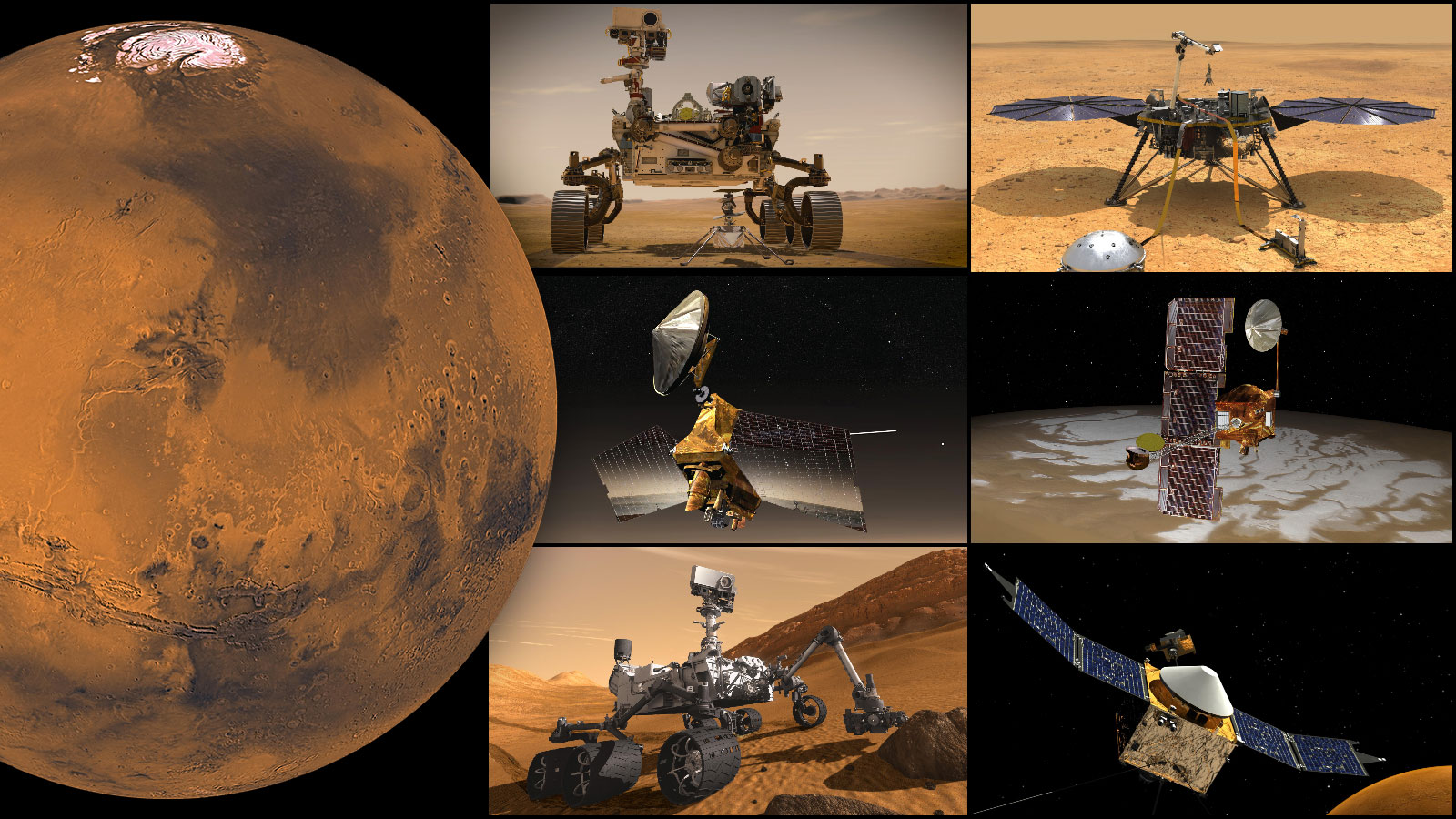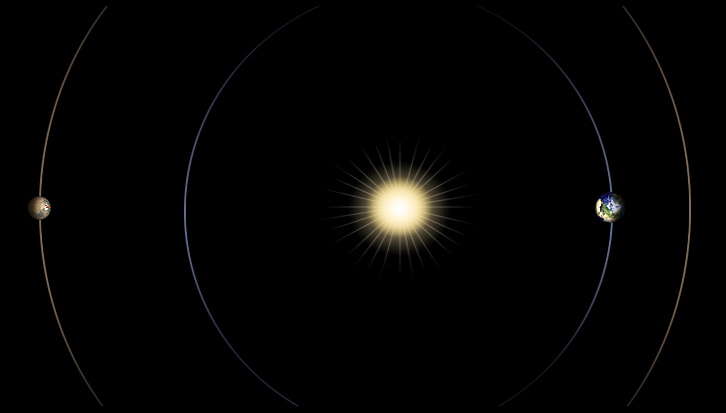NASA Mars missions facing 2-week communications blackout as sun blocks Red Planet
The blackout starts Oct. 2 and lasts until Oct. 16.

NASA plans to pause most of its robotic Mars exploration efforts in October for safety reasons associated with the Red Planet's position in space.
On Oct. 7, Mars will reach a position in its orbit called solar conjunction, which happens every two years when the planet moves behind the sun from Earth's perspective. The sun's hot outer atmosphere, or corona, lying in the line of sight, may disrupt interplanetary communications, NASA noted.
"That could corrupt commands and result in unexpected behavior from our deep space explorers," NASA said in a statement, referring to its three orbiters, two rovers, one lander and one helicopter all doing operations from the Red Planet. Solar conjunction will also affect other missions at Mars from Europe, China and India, although those agencies haven't yet detailed their plans for the conjunction period.
Related: China's Zhurong Mars rover returns panorama ahead of planetary blackout
Most NASA missions will stop sending commands and raw images between Oct. 2 and Oct. 16, although the timing will vary by a day or two in some cases, the agency said. In the meantime, NASA said it will task its various robots with "homework" that they can perform safely by themselves while communications are down.
● NASA's Perseverance rover, which landed in February, will perform weather measurements, look for any dust devils passing by (without moving its cameras), run radar experiments and listen for environmental sounds with its microphone. The Twitter account for Perseverance recently said the rover is looking for a good "parking spot" to wait out the dark communications period, but added there are lots of options to choose from. On Tuesday (Sept. 28), Perseverance's Twitter said it was ready. "I'm parked in a sweet spot between dunes and a rock outcrop," the rover's account tweeted.
● The Ingenuity Mars helicopter has been performing daring, long flights in recent weeks, although that work is on pause while NASA figures out how to fly safely during normal seasonal thinning of the Martian atmosphere. The agency hasn't disclosed the next flight date and it may be that Ingenuity will wait out the communications pause, as NASA said the helicopter will stay parked 575 feet (175 meters) away from Perseverance and send weekly status updates to the rover.
Get the Space.com Newsletter
Breaking space news, the latest updates on rocket launches, skywatching events and more!
● The Curiosity rover, which has been working on Mars since 2012, will do measurements of the weather and radiation, and also keep an eye out for dust devils. The mission is a veteran of several past solar conjunctions and hasn't faced any major issues.
● The InSight lander, which is stationary, will run a passive experiment — its seismometer will be operational to keep hunting for big marsquakes.
● NASA's three long-running orbiters, all veterans of past conjunctions — Odyssey, Mars Reconnaissance Orbiter (MRO) and the Mars Atmosphere and Volatile Evolution Mission (MAVEN) — will send status updates from the Martian surface missions back to Earth. They will also do science observations on their own, to send back to Earth when the planetary alignment is more favorable.

Once solar conjunction passes, engineers plan to download the information for about a week using NASA's Deep Space Network, a system of radio antennas across Earth that listen in on deep space missions.
"If the teams monitoring these missions determine any of the collected science data has been corrupted, they can usually have that data retransmitted," NASA said in the statement. Normal spacecraft operations will happen again once that data collection process is complete.
Follow Elizabeth Howell on Twitter @howellspace. Follow us on Twitter @Spacedotcom and on Facebook.
Join our Space Forums to keep talking space on the latest missions, night sky and more! And if you have a news tip, correction or comment, let us know at: community@space.com.

Elizabeth Howell (she/her), Ph.D., was a staff writer in the spaceflight channel between 2022 and 2024 specializing in Canadian space news. She was contributing writer for Space.com for 10 years from 2012 to 2024. Elizabeth's reporting includes multiple exclusives with the White House, leading world coverage about a lost-and-found space tomato on the International Space Station, witnessing five human spaceflight launches on two continents, flying parabolic, working inside a spacesuit, and participating in a simulated Mars mission. Her latest book, "Why Am I Taller?" (ECW Press, 2022) is co-written with astronaut Dave Williams.








